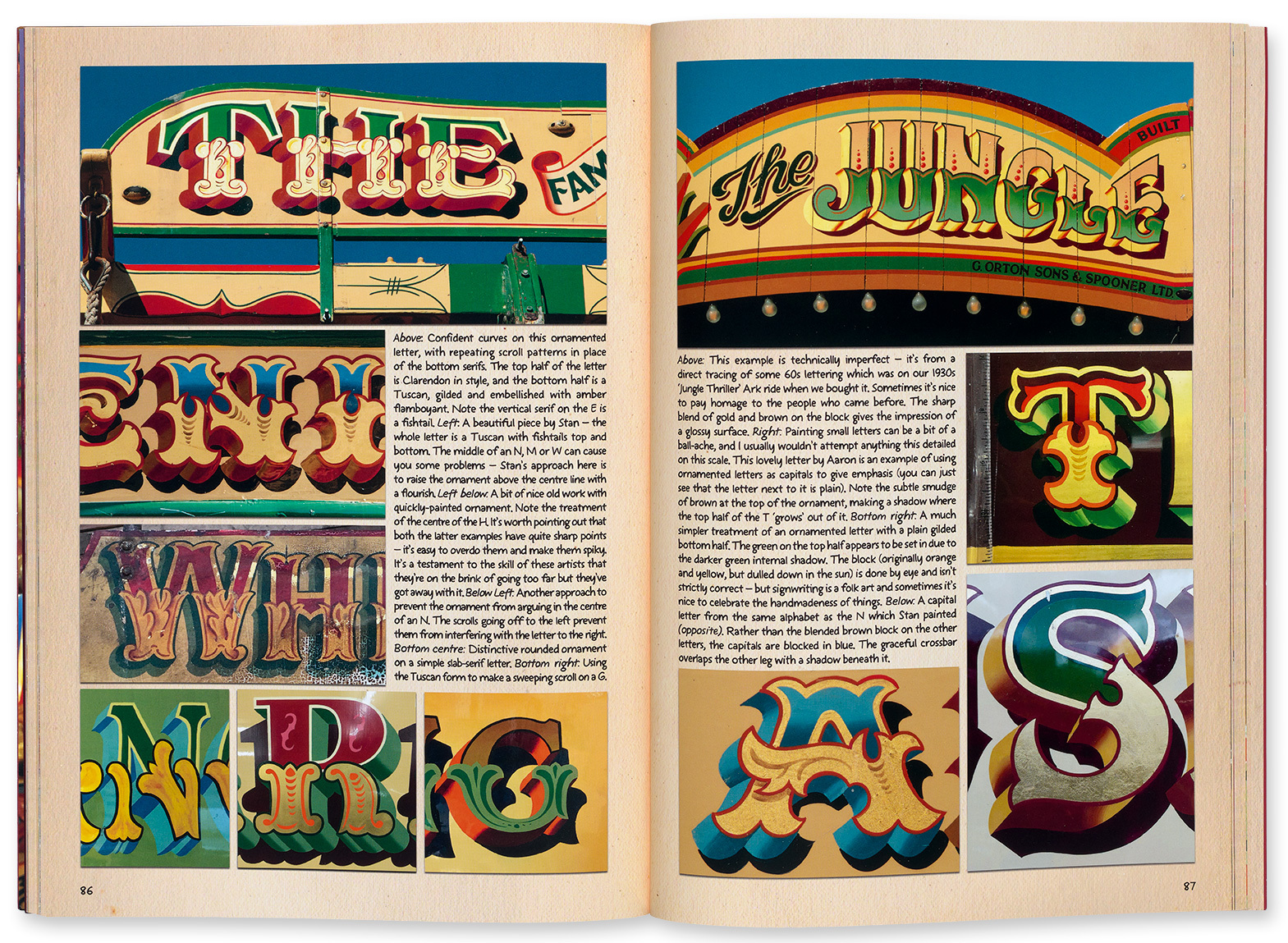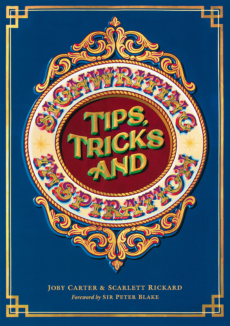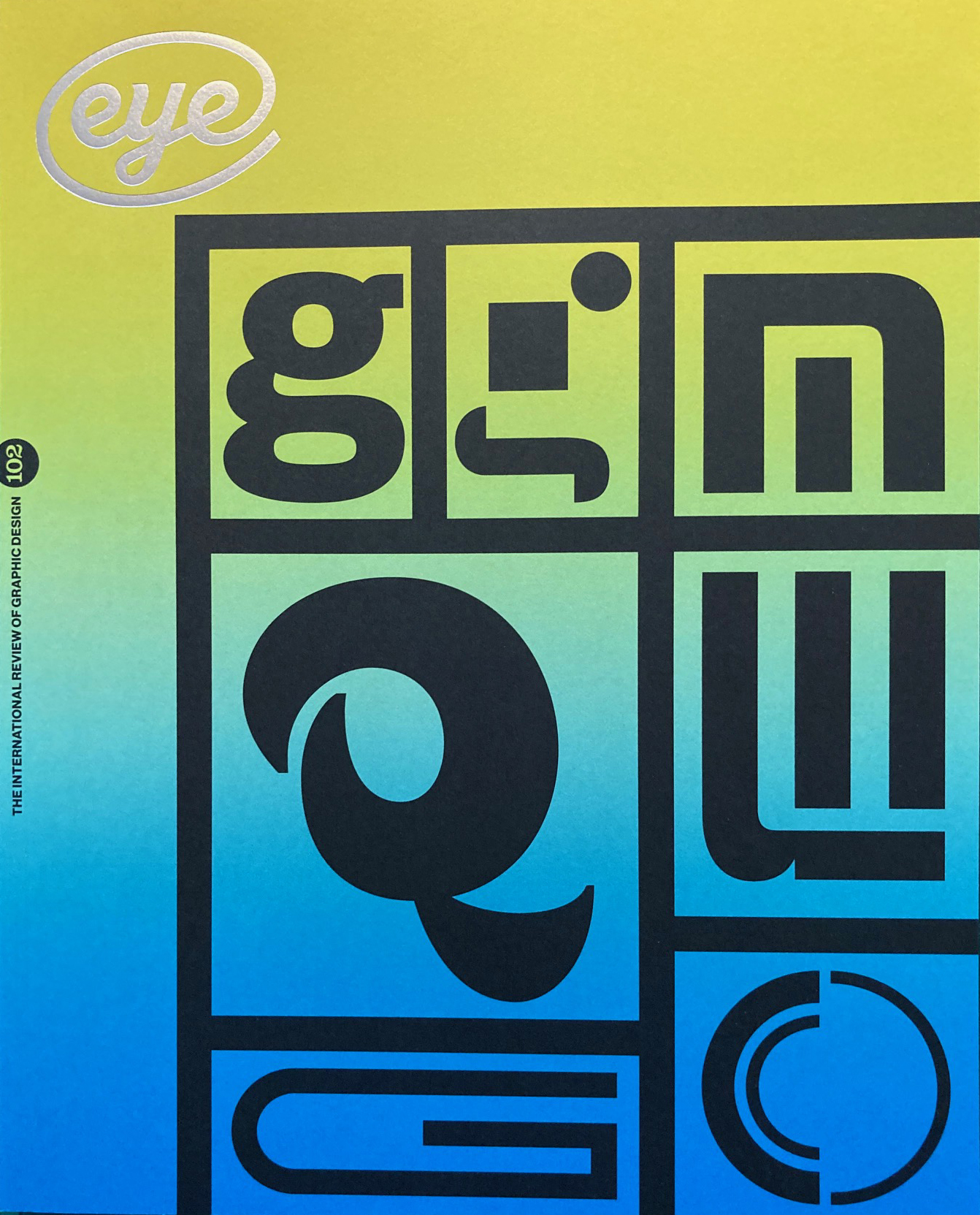Autumn 2021
Pop art before it was ‘Art’
Signwriting Tips, Tricks and Inspiration
By Joby Carter and Scarlett Rickard. Designed by Scarlett Rickard. Carter’s Entertainment, £20
Several chapters into this captivating how-to book, Joby Carter jokes about ‘carrying on the fairground tradition of decorating absolutely everything’. He should know – he grew up in the celebrated family that founded Carters Steam Fair, and he decided to be a signwriter at the age of eight. Carters is a British institution, taking traditional fairground rides to parks and recreation grounds throughout the English summer, a blast of colour, noise and fun that has delighted families (including my own) for decades. In the winter, when the fair returns to its Maidenhead HQ, everything has to be cleaned, repaired and repainted and Carter runs signpainting workshops and classes; the Eye team once attended such a class, and it was a humbling experience.
Signwriting Tips, Tricks and Inspiration, designed and edited by Scarlett Rickard, follows the fairground tradition with a ‘more is more’ approach to editorial design, with not one square millimetre of white space. After a brief introduction by Peter Blake (see Eye 35), a friend of the Carter family, it powers ahead with letter-drawing instructions that cover thicks and thins, construction lines, and seven basic all-caps alphabets. These are the Roman, Clarendon, Ship (based on matchbox lettering), Playbill, Broadway, Curveside and Tuscan, all generously illustrated with examples from the rides and vehicles of Carters Steam Fair itself. There are tips about scaling letters, brushes, gilding, blending, bevelling and blocking – a term Carter uses for making letters appear three-dimensional. Shadow techniques are carefully discussed: Carter critiques the mistakes found in traditional Pullman lettering.
We learn about the rousing sentiments of ‘gag tickets’ – the boards attached to rides and stalls. There are packed pages about ornamentation, detailing scrolls, ribbons and the pleasures of colour and paint, including a translucent enamel known as ‘flamboyant’.
Although the ostensible purpose is to instruct, the authors’ enthusiasm for the over-the-top showmanship of fairground lettering and art is shot through with references to Carter’s illustrious forebears, including Sid Howell, Charles Duffield, Edwin Hall and the influential Fred Fowle (see ‘Painted thrills and spills’ in Eye 86), and he frequently pays tribute to Stan Wilkinson, his teacher.
Carter’s commentary about lettering is opinionated but kind, imbued with a practical understanding of both the form and function of fairground signwriting: ‘Fairground art is the purest form of commercial art – it was pop art before Pop Art was a thing,’ he declares. ‘The fair is an opportunity for people to get away from the daily grind of their lives, to experience something other-worldly and beautiful.’

John L. Walters, editor of Eye, London
--
You can get more insights into Carter and Wilkinson from viewing Adrian Harrison’s film shorts 21st Century Victorian and When Better Letters Met Stan Wilkinson.
--
First published in Eye no. 102 vol. 26, 2021
Eye is the world’s most beautiful and collectable graphic design journal, published for professional designers, students and anyone interested in critical, informed writing about graphic design and visual culture. It is available from all good design bookshops and online at the Eye shop, where you can buy subscriptions and single issues.

